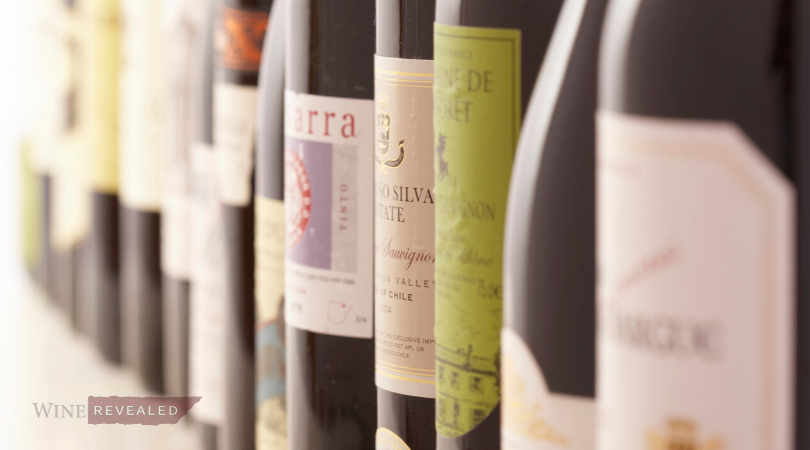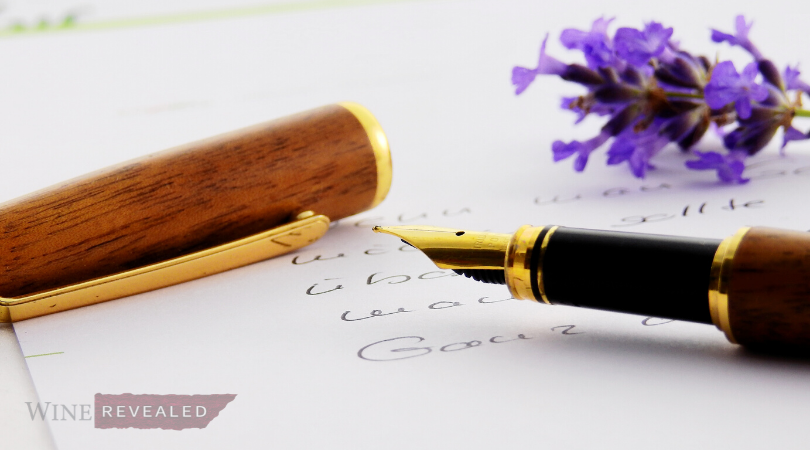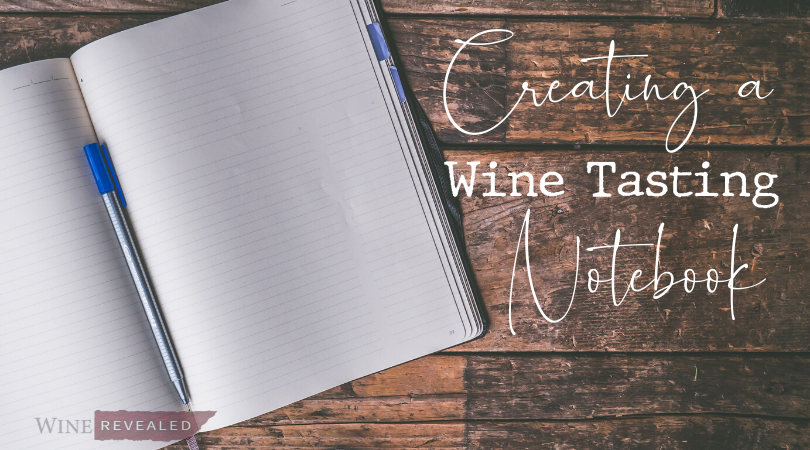As an Amazon affiliate, Revealed Films earns from qualifying purchases.
Every wine lover should have a Wine Tasting Notebook at hand, whether you are an expert, a seasoned wine drinker, or a complete novice. Why? A Wine Tasting Notebook allows you to:
- Record and remember your impressions of wines you have tasted
- Home in on what characteristics you enjoy most about wines
- Have a record of regions, wineries, and varieties you have tried so that you can revisit them or decide what to taste next
- Make more informed food and wine pairings that fit your tastes
- Be more intentional about your wine drinking so that you learn more about the world of wines
- Have a chronicle of restaurants, travels, holidays, parties, and special events where you tasted wines
Choosing a Journal
Your journal can be something already laid out that you purchase, or something as simple as a spiral notebook. Some prefer three-ring binders so that the journal can be organized with tabs by wine region or variety for easier reference in the future. You may also want to make your journal chronological so that it reads more like a scrapbook of wine exploration over time.
An electronic wine journal is another option. There are free and inexpensive apps that you may wish to explore that allow you to snap pictures of the label and rate various characteristics of the wine. Advantages of this type of journal are portability and searchability.
Your journal can be as elaborate or as plain as you wish to make it. A wine tasting notebook can be made or purchased within just about any price range, so choose one that best reflects your personality and what you want from your journal.
Consider carrying a small notebook or using a phone app for initial impression of wines tasted on outings. Take quick notes while the experience is still fresh in your mind. Later, at your convenience, you can transfer your notes to your tasting notebook and elaborate on any details.
Saving Wine Labels
Part of the charm of a Wine Tasting Notebook is saving the labels from the wines you have tasted. Often they are a work of art unto themselves, and they also contain important information about the wine. Additionally, they make it easier to identify a wine if you wish to purchase it again.
Save your bottles, and don’t be shy about asking a waiter if you can keep a bottle enjoyed at dinner, or ask a friend if you can take an empty bottle home from a party.
The oven method is the most popular method to remove labels neatly and without damage. Preheat the oven to 350 degrees, and make sure the bottle is empty and uncorked before heating it up. Ten minutes should do the trick.

Caution – handle the hot bottle very carefully! You also want to plan to have a heat resistant surface to place the bottle on after you remove it from the oven.
Carefully peel the label off – it should come off easily at this point. Immediately affix the hot label to wax paper or plastic wrap. Once cooled, it will be ready to add to your journal.
If this method does not work, allow the bottle to cool, and try the hot water method. Soaking a bottle in a sink filled with hot water may be sufficient to cause the label to pull away from the bottle. If you see it starting to pull away on its own, pull the bottle out of the sink and gently remove the label the rest of the way.
If the bottle has been in the sink for 10 minutes without the label pulling away, remove the bottle and see if you can get it to come off by working at the edge with your fingernails. Don’t force it – there is still one more trick to try if the adhesive is being stubborn.
If all else fails, place the bottle carefully in a pot of boiling water. Most stubborn labels give up at this point and float off – be sure to have a long spoon available to retrieve the label.
As with the oven method, place the label on wax paper or plastic wrap as soon as you retrieve it. If none of these methods work, check online or with your local wine merchant for products that remove labels without damaging them.

What to record in your Tasting Notebook
No two individuals are interested in the exact same information, but here are some basics that you will want to consider recording in your journal:
- Date of the tasting, as well as venue, location, or event
- Name and vintage of the wine tasted
- Price
- Grapes and varietal listed on the label
- Winery, country and wine region
- DOC or AOC, if applicable
- Color – think beyond just red or white, and try to compare the color with something in nature or something that depicts a vivid mental image. Wine colors are described with comparisons like straw, amber, ruby, cherry, terra cotta, etc.

- Note the aromas (sometimes called nose or bouquet) that you notice in this wine, and try again to find vivid descriptions that express the uniqueness of the wine and help you to capture the experience. You may smell fruits, earthy notes, or vegetal aromas.
- Next, note the flavors (sometimes referred to as palate) that you pick up in the wine. What is the initial sensation, the feel mid-tongue, and the finish? Note fruits, wood, sweetness, minerals, alcohol, acidity, and tannins that you tasted. Did you detect a particular texture? Was the wine balanced, or were there any aggressive elements? Be as detailed and specific as you can. Also, note if the flavor changed over the course of drinking the bottle.
- Record general impressions of the wine if there is anything else you want to note. And of course, record whether you enjoyed it and would like to try it again. Create your own 5 star rating system and rate each wine.
- You may wish to add notes about what you ate while enjoying the wine. Note if you felt it was a good pairing, and how the wine and food impacted one another.
- Many people like to add a note about the holiday, restaurant, party or event at which the wine was tasted. This may help jog your memory about the wine itself, and makes for a lovely chronicle of your wine-tasting adventures.
It may sound like a lot to write, but narrow it down to what is most important and prominent to you. These ideas are meant to get you thinking about what you are experiencing and being more intentional about noticing details in the wines you drink.
Ultimately, you are your own best teacher when it comes to learning about wine, and recording your impressions will help you to better remember and revisit your wine drinking experiences.



